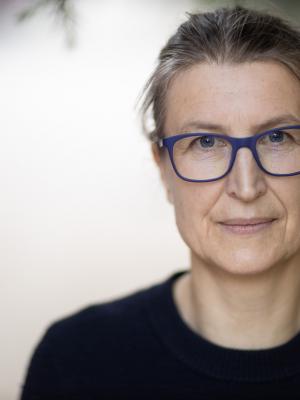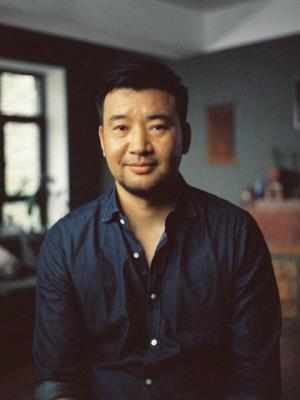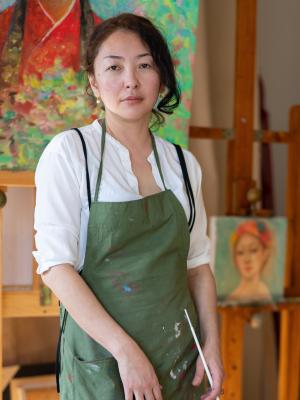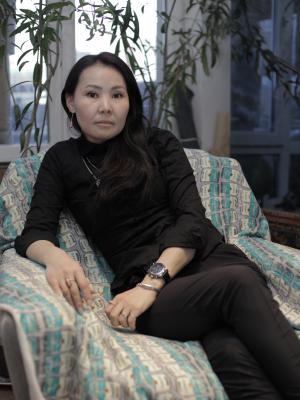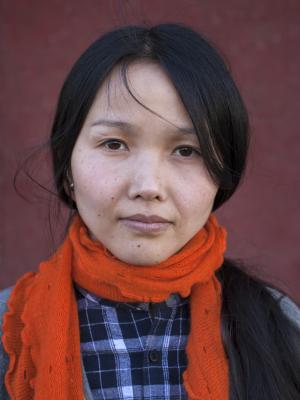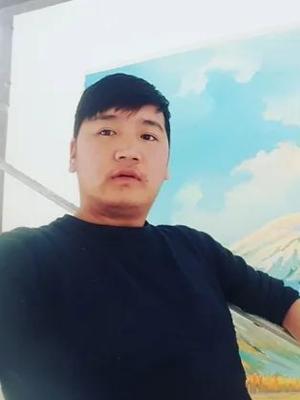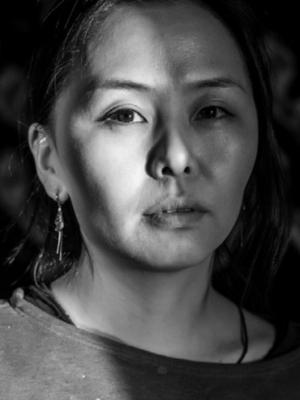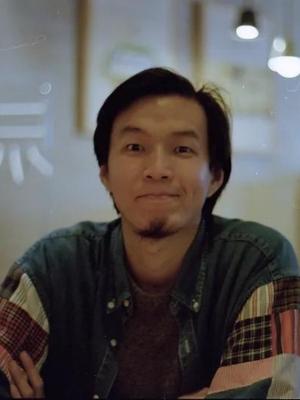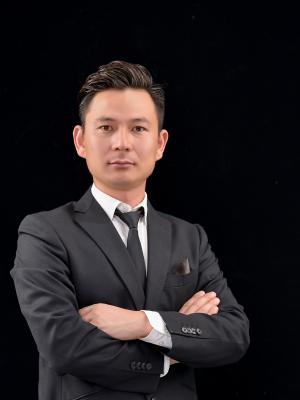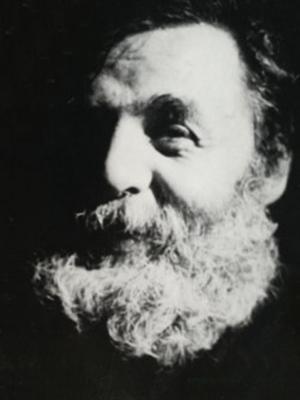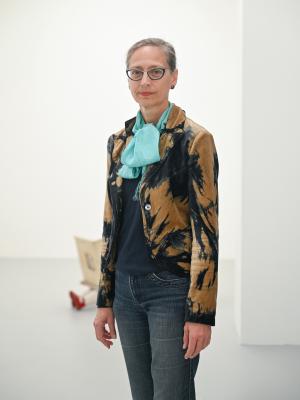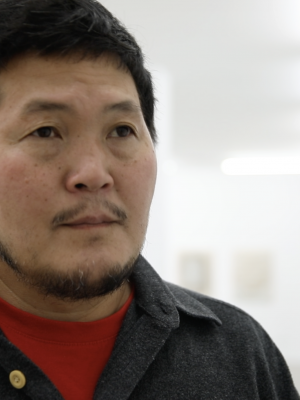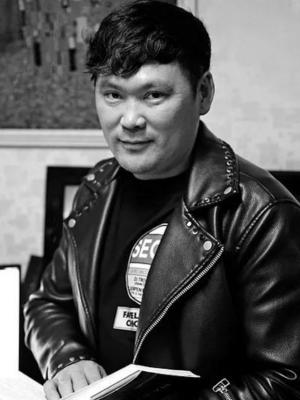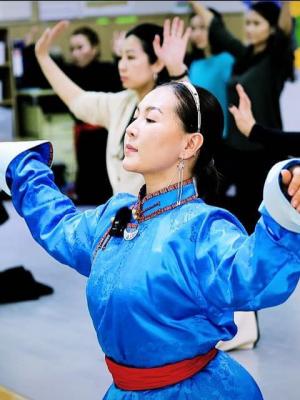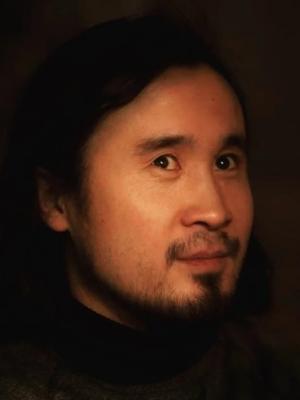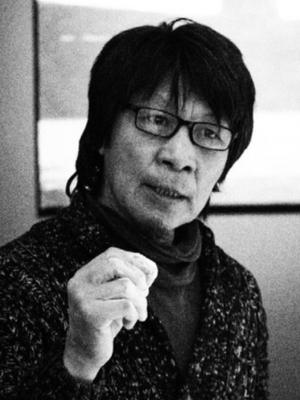The Post-Nomadic Experience
Nature - Art - Sustainability - Gender Relations - Metaphysics
A project by ZEIGENeV on the occasion of 50 years of diplomatic relations between Mongolia and Germany
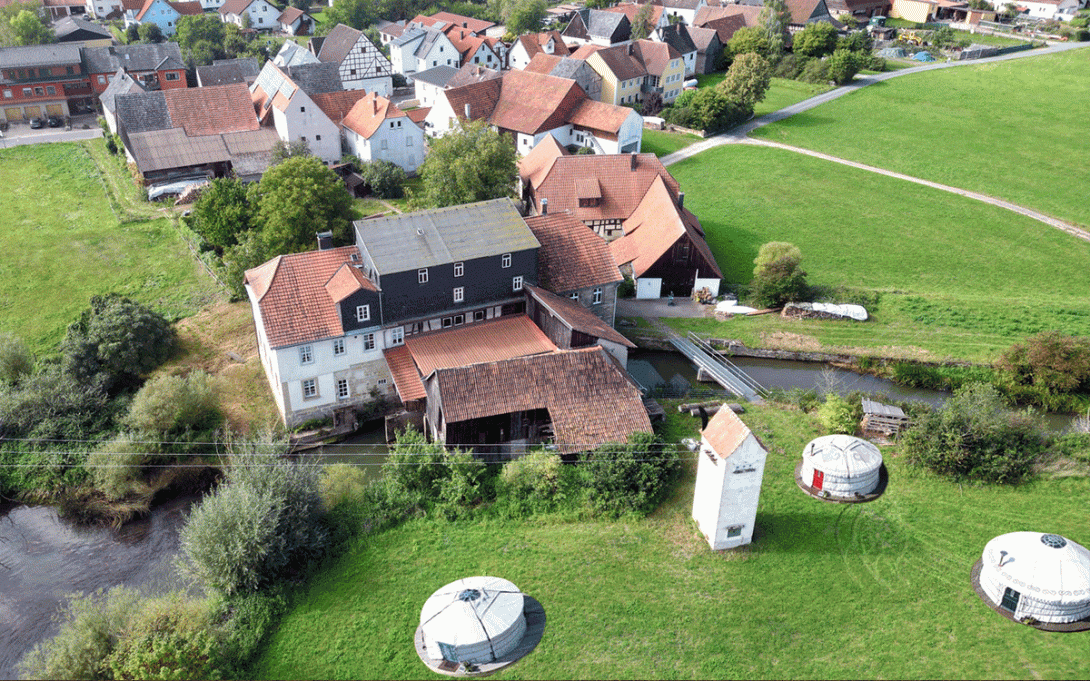
June 17 – October 7, 2024
With 3.3 million inhabitants and an average of 2 people per square kilometer, Mongolia is a landlocked country with only two neighbors, Russia and China. Germany was already present in Mongolia during the imperial era and also during the GDR era. As a result, around 10% of Mongolians still speak German today. Germany is regarded as Mongolia's “third neighbor”.
Historically characterized by nomadism, Mongolia reached its greatest expansion from the Caspian Sea in the west and the China Sea in the east around 1200 under Chinggis Khaan. This multi-ethnic state was characterized by religious diversity. At the end of the 12th century, the book “The Secret History of the Mongols” was written, which still has an identity-forming effect today.
Little is really known in Germany about the culture of Mongolia and its experiences, which are expressed in art, music, film, literature and hospitality.
Many of the artists living in Mongolia today live in the cities, speak English, but can still remember nomadic life. In many cases, they grew up with their nomadic grandparents, while their parents already lived in the city.
Part of this memory is the “nature ethic” of the nomads, according to which not even a stone may be picked up in the steppes without first asking permission. How different is this reverence in dealing with “natural resources” from our unquestioning appropriation of all available natural goods. What makes this project so valuable is that a rethink must take place in the West and is already beginning in some areas.
How can Mongolia arrive in the modern age without having to repeat the mistakes of the West? To do this, we in the West need to learn to have more respect for nature and all life in it.
Art Camp Bavaria
From June 17 to July 7, artists from Germany and Mongolia will meet in rural Bavaria in an old watermill in Mürsbach to work together on works and ideas related to nature and sustainability against the respective cultural and metaphysical backgrounds that still shape the realities of life and social structures in both countries today.
Exhibition : The Post-Nomadic Experience in THEgallery
The exhibition opens on July 6 presents selected works of art to convey key aspects of the nomadic culture of Mongolia's understanding of nature.
At the center is “The Great Blue Sky” - an identity-forming element of Mongolian culture to this day, which refers to the principle of a shapeless sky god in Tengrism.
This principle can be seen in Bronze Age rock paintings in the Altai Mountains, which present the forces of nature in shamanic symbols. The exhibition contrasts this with the cosmologies of A.R. Penck, who translates a post-communist, fraying world into sign systems. Instead of contextualizing the material aesthetics of Joseph Beuys with Mongolian shamanism as before, the exhibition focuses on the forces of nature in Mongolia's visual memory, which come into conflict with the effects of modernity.
Other influences on contemporary Mongolian art come from Lamaism, which is still visually powerful today. A special exhibition at the Biennale di Venezia is currently dedicated to the art movement “Mongol Zurag”, in which Baatarzorig Batjargal and Gerelkhuu Ganbold are participating. Both artists use the demons of Mongol Zurag, as they can also be seen on Lamaistic thangkhas, to formulate their criticism of the current social and ecological catastrophes in Mongolia. Dashdemed Sampil, who lives in Nuremberg, also draws energy from this tradition.
Franz Ackermann's artistic practice has always been nomadic. His mental maps are created as visual records and testimonies to an accelerated world that does not stop at Mongolia. Nomin Bold's colorfully decorated “gas masks” speak of the unbearable air conditions in Ulaanbaatar, the worst in the world.
Artists:
Franz Ackermann, Heike Baranowsky, Baatarzorig Batjargal, Munkhtsetseg Batmunkh, Nomin Bold, Enkhzaya Erdenebileg, Gerelkhuu Ganbold, Karl Heinz Jeron, Simone Körner, A.R. Penck, Nadine Rennert, Dashdemed Sampil
Music: Chinbat Orkhonbaatar, Dance: Tsatral Tumendemberel
Supported by the Bavarian State Chancellery and the Oberfrankenstiftung.
Art Camp Mongolia
From July 25 to August 11, artists from Germany and Mongolia will meet in the steppe of Bulgan Province near a nomadic settlement. Without electricity, water or internet, everyone lives together in yurts and the big blue sky near a nomadic village halfway between Ulaanbaatar and Kharakorum.
The intense shared experience of nature contrasts with the artists' usual form of movement as individual urban nomads. During this time, historical, archaeological and sacred mountains in the Mongolian steppe will be visited.
Art Camp Mongolia is organized in cooperation with the Blue Sun Center of Contemporary Art of Mongolia and funded by the German Federal Foreign Office.
Exhibition Zanabazar Museum, Ulaanbaatar
The exhibition at the Zanabazar Museum marks the end of two Art Camps and brings together the collected experiences of the German-Mongolian summer of 2024. Experiences in the Bavarian cultural landscape and the Mongolian steppe contrast with modern jet-set nomadism and the effects of man-made climate change. The exhibition examines whether resilience can be found in the respective cultural contents of the different cultures, which can be activated for a changed approach to resources.
The Zanabazar Museum is the ideal location. The collection spans a wide range from Bronze Age, shamanic-Tengrian artifacts to Lamaist ritual masks and thangkhas to modern Mongol Zurag paintings. The eponym Öndör Geegen Zanabazar, 1635 - 1523, was the first spiritual leader of Gelupa Buddhism in Mongolia and the most important artist, architect, poet and scholar of his time.
Other influences on contemporary Mongolian art come from Lamaism, which is still visually powerful today. A special exhibition at the Biennale di Venezia is currently dedicated to the art movement “Mongol Zurag”, in which Baatarzorig Batjargal and Gerelkhuu Ganbold are participating. Both artists use the demons of Mongol Zurag, as they can also be seen on lamaistic thangkhas, to formulate their criticism of the current social and ecological catastrophes in Mongolia. Dashdemed Sampil, who lives in Nuremberg, also draws energy from this tradition.
Franz Ackermann's artistic practice has always been nomadic. His mental maps are created as visual records and testimonies to an accelerated world that does not stop at Mongolia. Nomin Bold's colorfully decorated “gas masks” speak of the unbearable air conditions in Ulaanbaatar, the worst in the world.
Artists:
Franz Ackermann, Heike Baranowsky, Baatarzorig Batjargal, Munkhtsetseg Batmunkh, Nomin Bold, Enkhzaya Erdenebileg, Gerelkhuu Ganbold, Karl Heinz Jeron, Simone Körner, A.R. Penck, Nadine Rennert, Tuguldur Yondonjamts, Munguntsetseg Lkhagvasuren, Dalkh-Ochir Yondonjunai, Badam Dashdondog and other artists from the Blue Sun Center of Contemporary Art of Mongolia.
Supported by the Federal Foreign Office.
Artists




